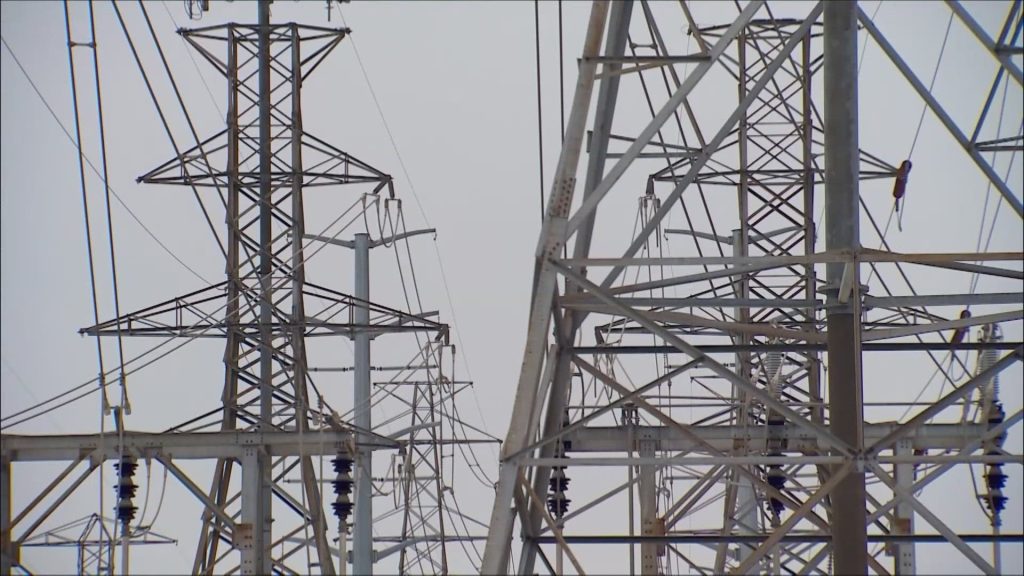Many experts are skeptical the grid would see as much demand growth as ERCOT predicts.

On Thursday, Texas’ grid operator forecasted that the state’s rising demand for electricity could outpace its available supply by the summer of 2026.
In a report detailing supply and demand projections for the next five years, the Electric Reliability Council of Texas (ERCOT) warned that the grid may struggle to meet peak demand during the summer and winter months starting next year.
However, this was the most pessimistic scenario presented by ERCOT. Other projections showed that while supply could be tight, it would still stay slightly ahead of demand. Some experts cautioned that ERCOT’s assumptions were overly conservative and likely more negative than what will actually occur.
ERCOT explained that the assumptions in the report reflect the performance of grid resources and the dynamic nature of the ERCOT grid. “It’s important to note that all scenarios in this report involve a degree of uncertainty that could change long-term outcomes, and forecasts will evolve over time based on a variety of factors,” they stated.
ERCOT estimates that power demand could nearly double by 2030, driven by population growth, extreme weather events, and an increase in energy-hungry users like crypto mining operations, data centers, and the electrification of oil and gas industries.
The grid operator’s forecast for future demand grew significantly after the state Legislature passed a law in 2023 altering how ERCOT predicts demand. Previously, ERCOT could only factor in users who had signed connection agreements with utilities, but the new law allows ERCOT to include potential users with no formal agreement, as long as the utility expects the project to connect to the grid.
Experts pointed out that predicting whether large users will actually build projects in Texas is challenging, as companies may submit multiple connection requests in different locations. In this legislative session, lawmakers are expected to direct regulators to refine ERCOT’s forecasts by gathering more information from these potential projects.
ERCOT’s worst-case prediction indicated a 6.2% shortfall in energy supply compared to peak summer demand in 2026, with that gap growing to 32.4% by summer 2029. Shortages during winter would be slightly smaller over the same period.
Alternative scenarios modeled by ERCOT assumed slower demand growth and a quicker development of new generation capacity, including 9,720 megawatts from projects funded by the Texas Energy Fund — a $10 billion taxpayer-backed loan initiative aimed at encouraging new natural gas plants.
Under these scenarios, ERCOT’s supply would remain sufficient to meet demand, but this model assumed no delays in Texas Energy Fund projects, which is unlikely based on the typical pace of development.
ERCOT CEO Pablo Vegas emphasized that the state’s economic growth calls for “immediate action to ensure long-term reliability and affordability.”
Some experts criticized the report, arguing that its assumption of rapid demand growth was too extreme. “The numbers look bad because of the assumption that 52 gigawatts of new load will come online in just four years,” said Joshua Rhodes, a researcher at the University of Texas at Austin. “I don’t think that much new load can be added so quickly, so I don’t think the situation is as dire as the report suggests.”
Energy consultant Doug Lewin described ERCOT’s assumptions as “irredeemably flawed” and said they were “needlessly panic-inducing.”
Michael Jewell, an energy attorney, pointed out that the report failed to account for how large energy users often reduce their consumption during high-price periods. He also argued that ERCOT’s estimates undervalued the state’s expanding solar and wind resources. “When you push down on the generation side and push up on the load side, you’re going to show a deficiency in generation,” Jewell said.
Texas has increased its power supply by 35% in the last four years, with more than 90% of that coming from solar, wind, and batteries, according to Lewin.
Experts emphasized the importance of continuing to develop all types of energy resources in Texas, particularly given legislative proposals that could hinder solar and wind power expansion. “We’re going to need every megawatt from every generation source available,” Jewell said. “Legislative measures that discourage the continued development of all energy resources are anti-energy.”
ERCOT pledged to work on solutions to enhance its supply margins, including improving battery storage, collaborating with large energy users who can reduce their usage during tight grid conditions, and supporting Texas Energy Fund projects, among other strategies.
“We look forward to working on both short- and long-term solutions with the Texas Legislature, the Public Utility Commission, and stakeholders to strengthen the reliability and resiliency of the Texas power grid,” said ERCOT CEO Pablo Vegas.




